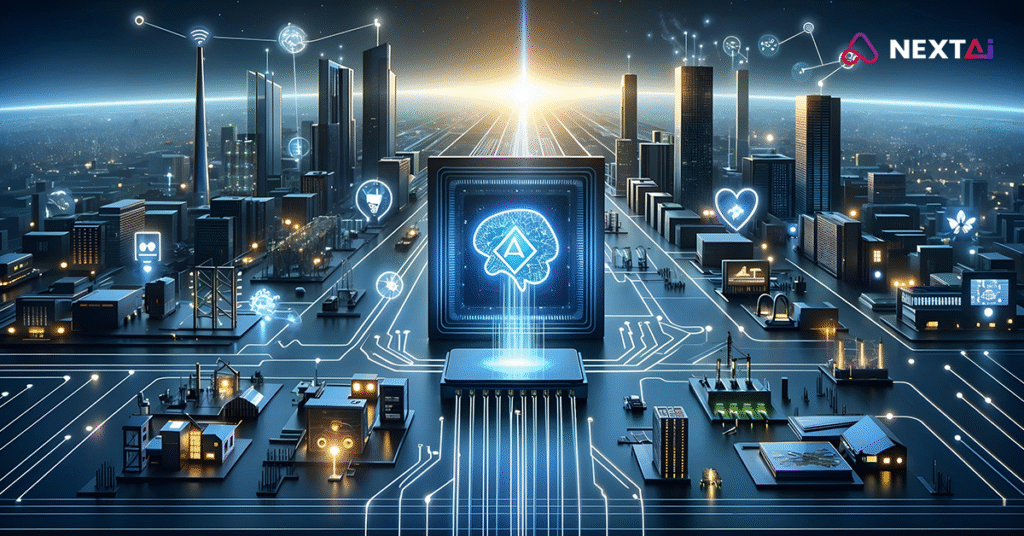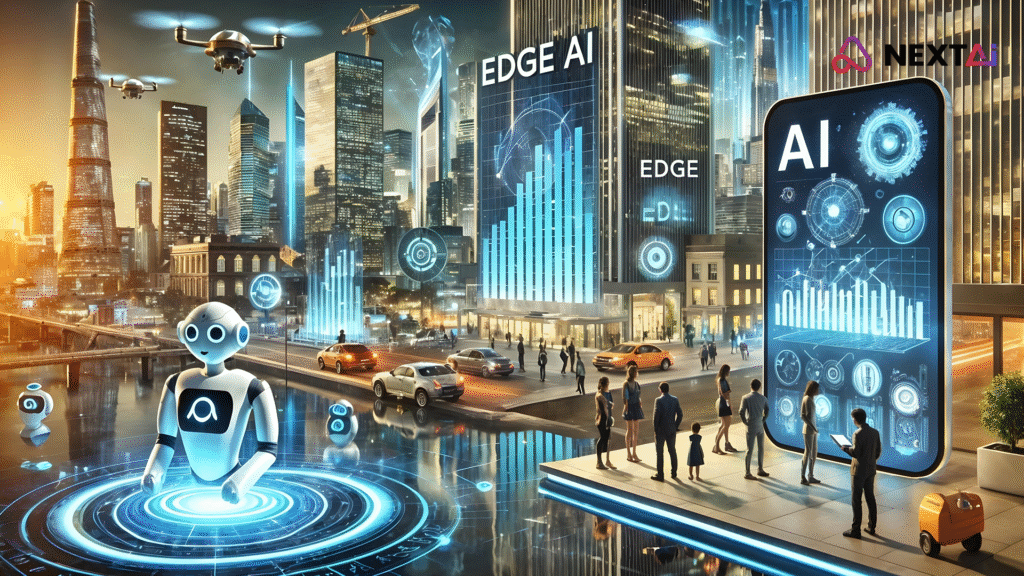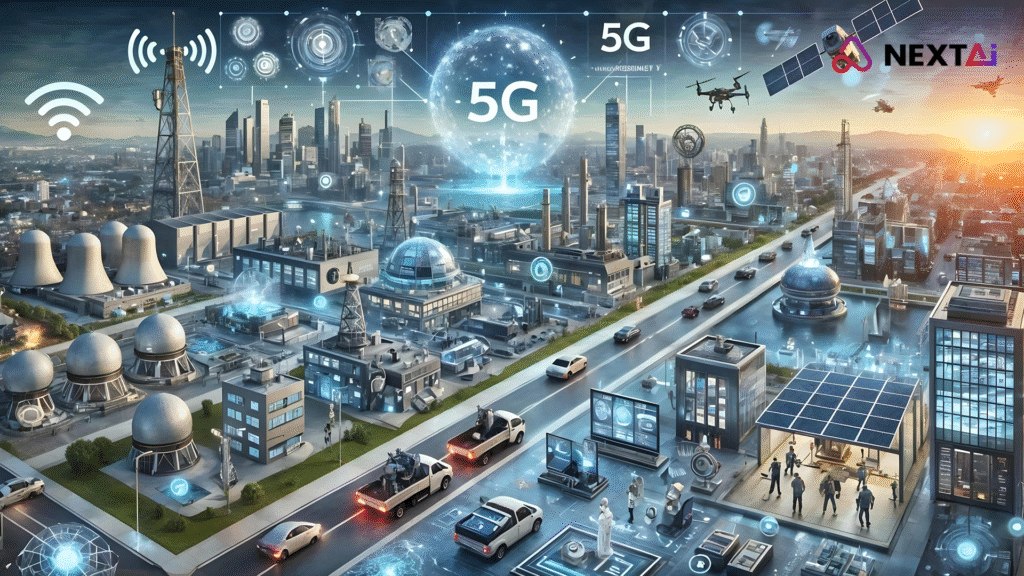
Edge AI: Bringing Intelligence Closer to Devices and Applications
By Rajiv Rajkumar Bathija – Visionary with 35 Years of Experience | Edge AI

Rajiv Rajkumar Bathija, at the age of 60, is an esteemed thought leader with over 35 years of experience in the technology industry. Rajiv has been at the forefront of driving innovation, bridging the gap between technology and its practical applications. His insights have continuously reshaped how industries leverage emerging technologies to solve real-world problems. Known for his visionary thinking and unmatched expertise, Rajiv has a proven track record of leading groundbreaking projects and inspiring a new generation of tech enthusiasts.
In recent years, Artificial Intelligence (AI) has become an integral part of how we interact with technology. From virtual assistants to smart cameras, AI is transforming the ways in which we live and work. But a new trend is emerging that brings intelligence closer to where the data is being generated: Edge AI. This paradigm shift is redefining the relationship between data, devices, and decision-making, allowing us to experience smarter, faster, and more secure solutions.
What Is Edge AI?
Edge AI refers to deploying AI models on edge devices—those that are on the periphery of a network, like sensors, cameras, and smartphones. Instead of sending data to centralized cloud servers for processing, Edge AI processes data locally, on the device itself. This approach not only reduces latency but also minimizes dependence on cloud connectivity, leading to a host of benefits in terms of speed, security, and efficiency.
Why Edge AI Matters
1. Reduced Latency and Faster Response Times
One of the most significant benefits of Edge AI is the reduction in latency. By processing data locally, edge devices can make decisions in real time. Consider autonomous vehicles—they must make split-second decisions to ensure passenger safety. Edge AI ensures that such decisions are not hindered by the delays associated with cloud-based processing, enabling immediate and efficient action.
2. Improved Privacy and Data Security
With increasing concerns over data privacy and security, Edge AI provides an attractive solution. By processing data locally, less information needs to be transmitted to centralized servers, minimizing the risk of breaches. This makes Edge AI an ideal choice for applications where sensitive personal or business information is involved, such as healthcare devices or smart homes.
3. Reduced Bandwidth and Cloud Dependency
Edge AI helps reduce the amount of data transmitted over the network, leading to significant savings in bandwidth costs. As the number of connected devices continues to grow, cloud infrastructure can become overwhelmed by the vast amount of data generated. By performing computations at the edge, only critical information that requires further analysis is sent to the cloud, thus reducing pressure on centralized systems and enabling more efficient use of cloud resources.
Real-World Applications of Edge AI
Edge AI has a wide range of practical applications, many of which are already making a difference today:
– Smart Cameras: AI-enhanced security cameras use edge AI to detect potential threats in real-time, sending alerts only when necessary while reducing bandwidth usage.
– Healthcare Wearables: Devices like smartwatches can monitor health metrics such as heart rate and detect anomalies locally, providing users with real-time insights without the need for constant connectivity.
– Manufacturing and Industrial IoT: Edge AI is being used in factories to monitor machinery, predict equipment failures, and ensure quality control—all without relying heavily on cloud processing, ensuring lower downtime and faster response times.
– Retail and Customer Experience: Retailers are leveraging Edge AI to analyze shopper behavior in stores, personalize promotions, and manage inventory—delivering insights at the point of action rather than waiting for data to travel to a cloud server and back.
Challenges of Implementing Edge AI
While Edge AI offers numerous advantages, implementing it comes with its own set of challenges:
– Limited Processing Power: Edge devices have limited computational capabilities compared to centralized cloud servers. Running complex AI models on these devices requires optimization and often, compromises on the size and depth of the models.
– Scalability: Deploying and maintaining AI models on thousands of devices requires significant effort, especially when updates are needed. Efficient model management is crucial to ensure a consistent experience across all devices.
– Energy Consumption: Edge AI devices must be energy-efficient since they often run on battery power. Balancing computational demands with energy constraints is a constant challenge in this field.
The Future of Edge AI
As the demand for real-time intelligence grows, Edge AI is set to play an even more pivotal role in our everyday lives. Innovations in hardware, such as dedicated AI chips, are already pushing the boundaries of what is possible at the edge. Advances in model compression and quantization are making it feasible to run sophisticated models on smaller, less powerful devices.
With 5G technology further supporting rapid data exchange and enabling low-latency communication, the potential for Edge AI applications is vast. From smart cities to autonomous drones, the combination of 5G and Edge AI will enable us to build more responsive and resilient solutions.

Conclusion
Edge AI is not just a buzzword; it represents a fundamental shift in how intelligence is distributed and applied. By bringing data processing closer to the source, Edge AI offers faster responses, improved privacy, and a reduced reliance on cloud resources. As technology continues to evolve, Edge AI will be at the forefront, driving innovation across industries and making our connected world smarter and more efficient.
If you’re excited about what Edge AI can bring to your industry, now is the time to explore and innovate.
—
Follow me for more insights on how emerging technologies are shaping the world.
Feel free to share your thoughts or reach out—I’d love to hear how you see Edge AI transforming your field!
